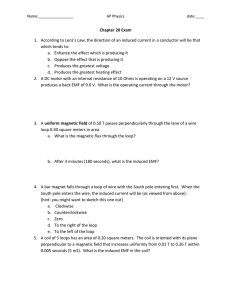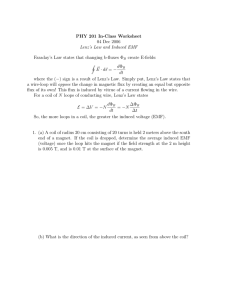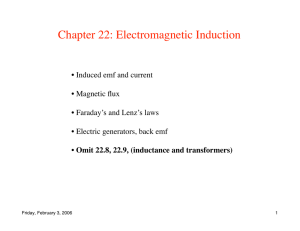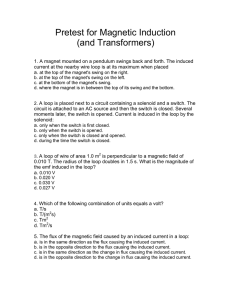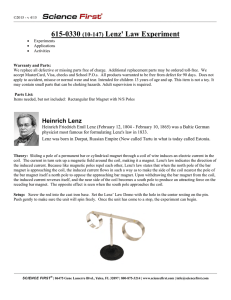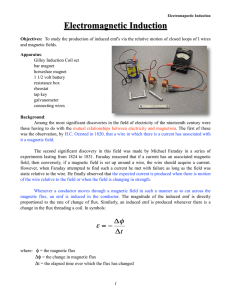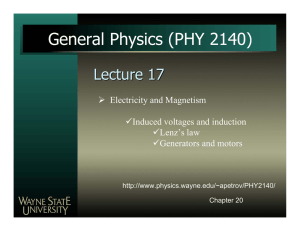The Polarity of an Induced EMF (Lenz`s Law)
advertisement
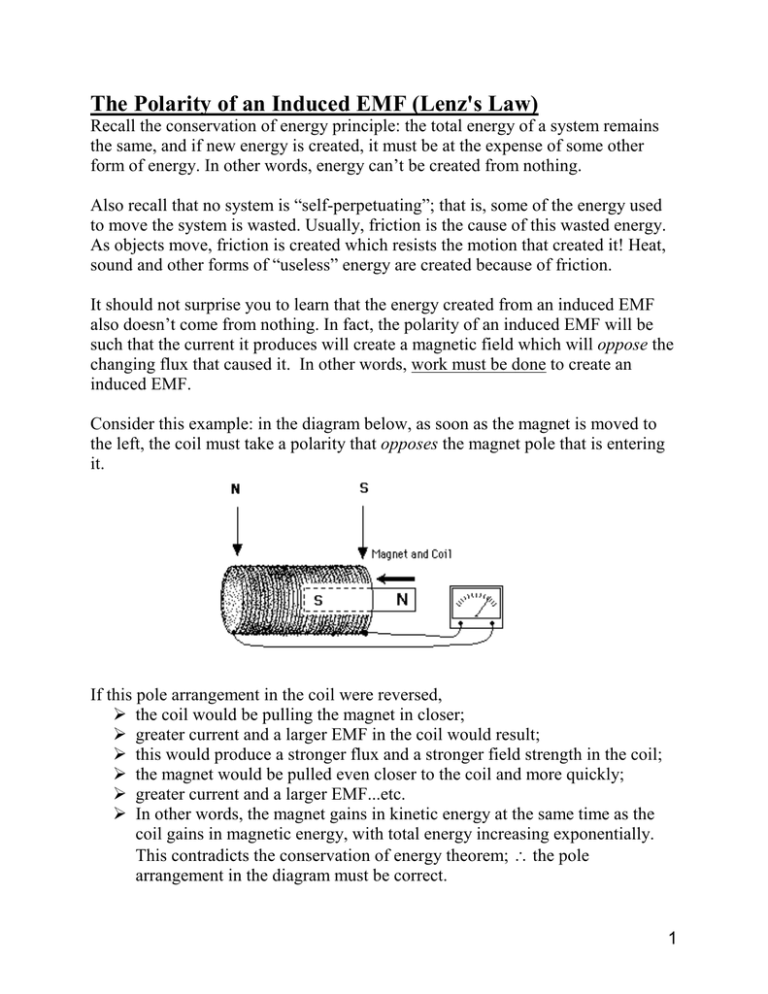
The Polarity of an Induced EMF (Lenz's Law) Recall the conservation of energy principle: the total energy of a system remains the same, and if new energy is created, it must be at the expense of some other form of energy. In other words, energy can’t be created from nothing. Also recall that no system is “self-perpetuating”; that is, some of the energy used to move the system is wasted. Usually, friction is the cause of this wasted energy. As objects move, friction is created which resists the motion that created it! Heat, sound and other forms of “useless” energy are created because of friction. It should not surprise you to learn that the energy created from an induced EMF also doesn’t come from nothing. In fact, the polarity of an induced EMF will be such that the current it produces will create a magnetic field which will oppose the changing flux that caused it. In other words, work must be done to create an induced EMF. Consider this example: in the diagram below, as soon as the magnet is moved to the left, the coil must take a polarity that opposes the magnet pole that is entering it. If this pole arrangement in the coil were reversed, the coil would be pulling the magnet in closer; greater current and a larger EMF in the coil would result; this would produce a stronger flux and a stronger field strength in the coil; the magnet would be pulled even closer to the coil and more quickly; greater current and a larger EMF...etc. In other words, the magnet gains in kinetic energy at the same time as the coil gains in magnetic energy, with total energy increasing exponentially. This contradicts the conservation of energy theorem; ∴ the pole arrangement in the diagram must be correct. 1 The diagram on the left shows a loop that is in a magnetic field: Suppose that we increase the field B by turning up the current in the electromagnet that is generating field B. This will make a current flow counterclockwise in the loop, as shown on the right. Lenz’s Law says that the induced current generated in the loop must oppose this increase in the field B. That is, it must make a magnetic field to reduce or push against the increasing field. Therefore it makes a current that produces a field with a north pole to the left of the loop. The RHR says that a counter-clockwise current will create such a field. Example #5: For the above diagrams, explain another way that field ‘B’ can be varied in order to produce: a) a counterclockwise current; b) a clockwise current (two ways here). (see Induction Ex 5 for answer) 2


